Advantages of Remote Wellness Monitoring for Older Adults
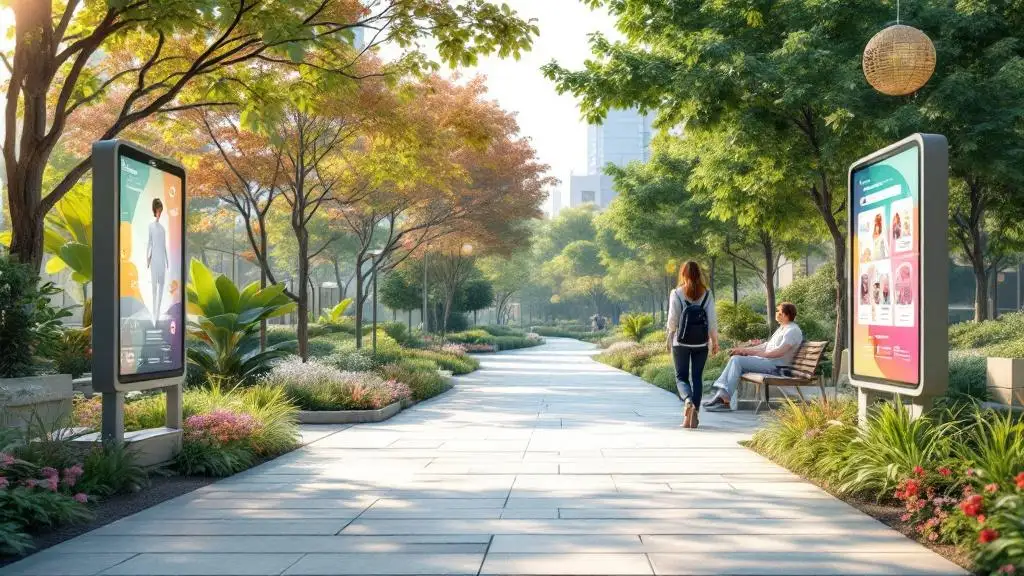
Empowering Seniors Through Remote Healthcare Innovation
Remote wellness monitoring represents a transformative shift in elderly care, promoting independence, safety, and proactive health management. As the global population ages, integrating innovative telehealth solutions becomes essential to address healthcare challenges unique to seniors. This article explores the manifold advantages of remote wellness monitoring, emphasizing its role in improving health outcomes, supporting aging in place, and enhancing the overall quality of life for older adults.
Enhancing Safety and Continuous Monitoring Capabilities

What are the advantages of remote wellness monitoring for older adults?
Remote wellness monitoring provides numerous benefits for older adults, primarily by enabling continuous tracking of vital signs and health data from the comfort of their homes. This real-time surveillance allows for early detection of health issues, which can lead to prompt interventions and better management of chronic conditions.
One significant advantage is the increased safety and confidence it offers seniors. With easy-to-use devices like blood pressure cuffs, blood glucose meters, and wearable sensors, older adults can monitor their health regularly. These tools help visualize health trends over time, empowering them with knowledge and control over their health status.
Monitoring systems also improve communication between seniors and healthcare providers. Alerts generated by abnormal vital signs or symptoms facilitate timely clinical responses, reducing the risk of severe health deterioration. Patients often feel more engaged and satisfied, knowing they are actively involved in their health management.
Additionally, remote wellness monitoring supports aging in place by reducing unnecessary hospital visits and preventing conditions from worsening. This approach minimizes exposure to hospital-related risks and helps maintain independence.
Overall, remote health monitoring fosters a proactive healthcare environment, enhances safety, and promotes longer, healthier, and more autonomous living for older adults.
Supporting Chronic Disease Management and Early Intervention
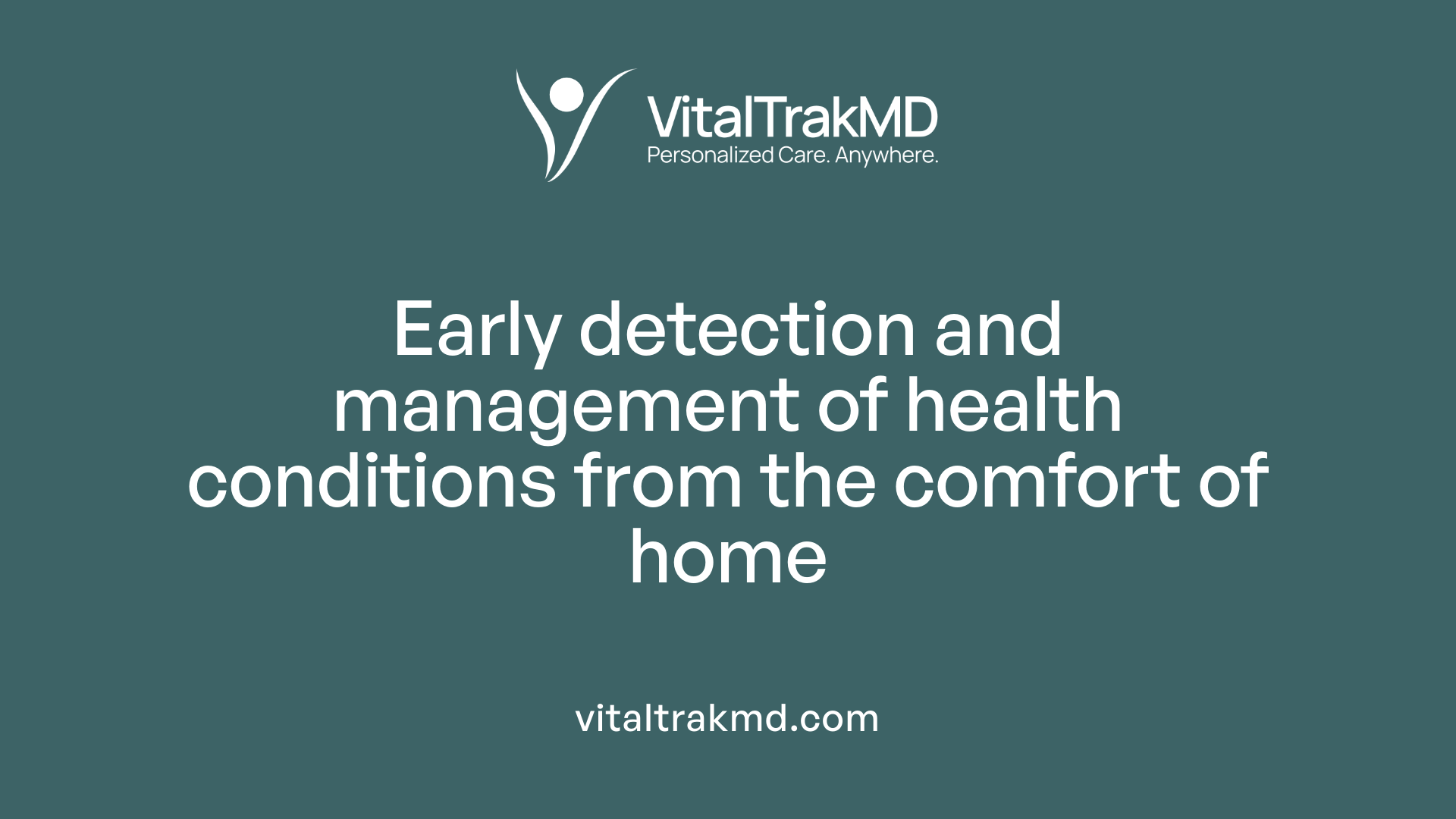
What are the advantages of remote wellness monitoring for older adults?
Remote wellness monitoring provides significant benefits for older adults by enabling continuous and real-time tracking of vital signs and health data. This proactive approach helps in the early detection of health issues, allowing timely medical responses that can prevent complications.
For seniors managing chronic conditions like diabetes, hypertension, or heart disease, remote monitoring offers the convenience of managing their health from home. It reduces reliance on frequent clinic visits, which can be challenging due to mobility issues or transportation barriers.
The technology also enhances safety and confidence. Easy-to-use devices and visual health trend displays help seniors understand their health status better, fostering a sense of control and independence.
Communication between patients and healthcare providers is improved with timely alerts and data sharing, supporting better adherence to treatment plans. This ongoing engagement leads to more personalized care and increased satisfaction.
Overall, remote wellness monitoring makes healthcare more accessible and proactive. It supports aging in place, improves health outcomes, reduces hospitalizations, and boosts healthcare system efficiency.
Facilitating Aging in Place and Enhancing Independence
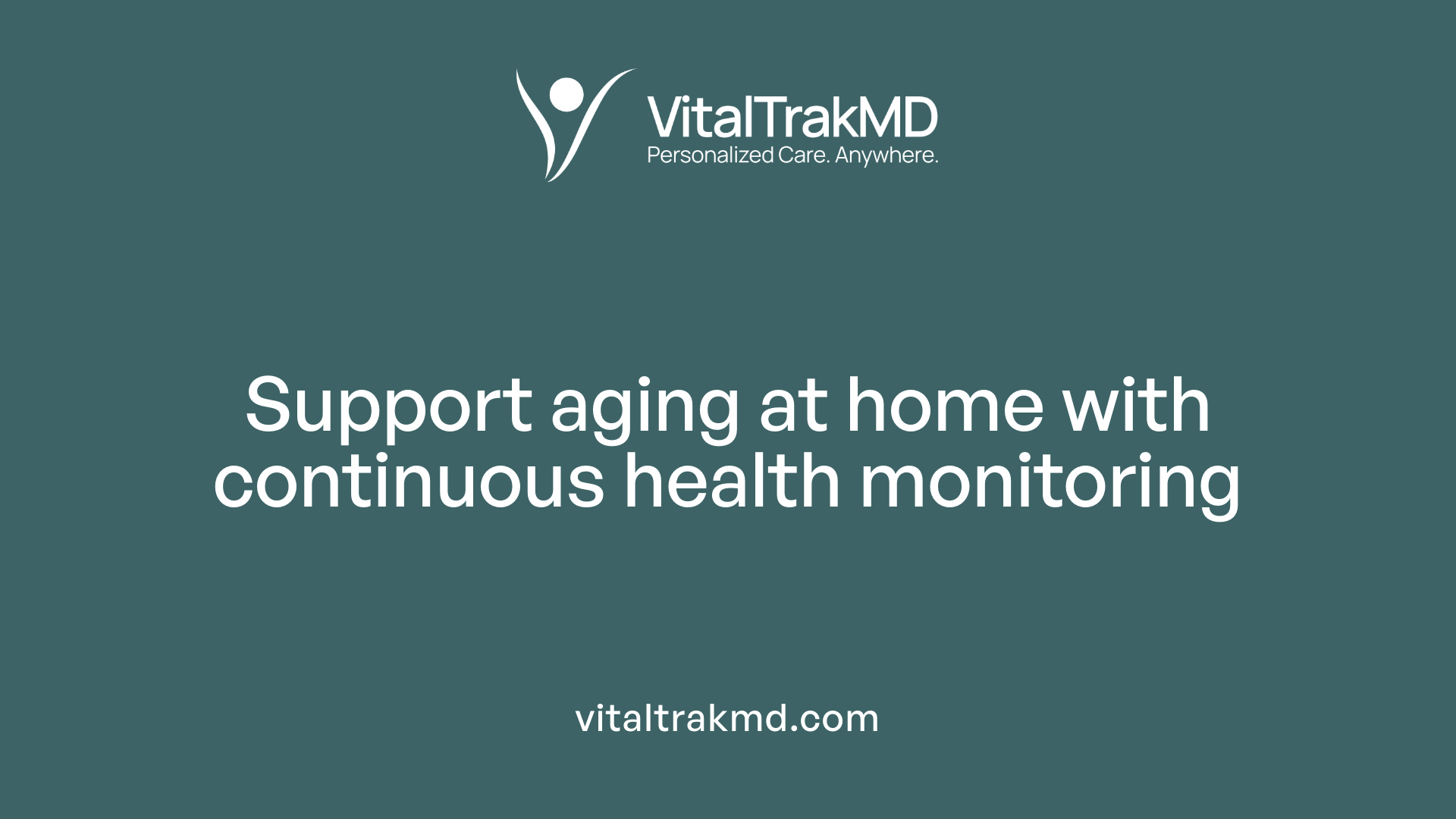
How does remote wellness monitoring support aging in place?
Remote wellness monitoring plays a vital role in helping older adults remain in their homes safely and comfortably. By continuously observing daily activities and health metrics through sensors and digital devices, these systems allow for early detection of issues like falls, cognitive decline, sleep disturbances, and unusual routines.
Sensor technologies such as motion detectors, environmental monitors, and wearable devices collect real-time data, which are analyzed using machine learning and artificial intelligence. This enables healthcare providers and caregivers to intervene promptly, often before problems escalate. For example, if a fall is detected or a pattern of forgetfulness emerges, immediate alerts can be sent to caregivers or medical teams.
Beyond safety, remote monitoring facilitates regular virtual check-ins through telehealth platforms, allowing healthcare professionals to assess health status, review vital signs, and manage medications remotely. This minimizes the need for frequent in-person visits, reducing the risk of hospitalizations.
Innovative devices like social robots and local navigation tools further support safety and social engagement, helping seniors stay active and connected. These technologies also promote emotional well-being and reduce feelings of isolation.
Overall, remote wellness monitoring creates a supportive environment where seniors can enjoy independence, confidence, and better health management. It empowers them to live at home longer while maintaining close oversight of their health and safety, helping to ease caregiver responsibilities and improve overall quality of life.
Improving Elderly Care Quality and Efficiency
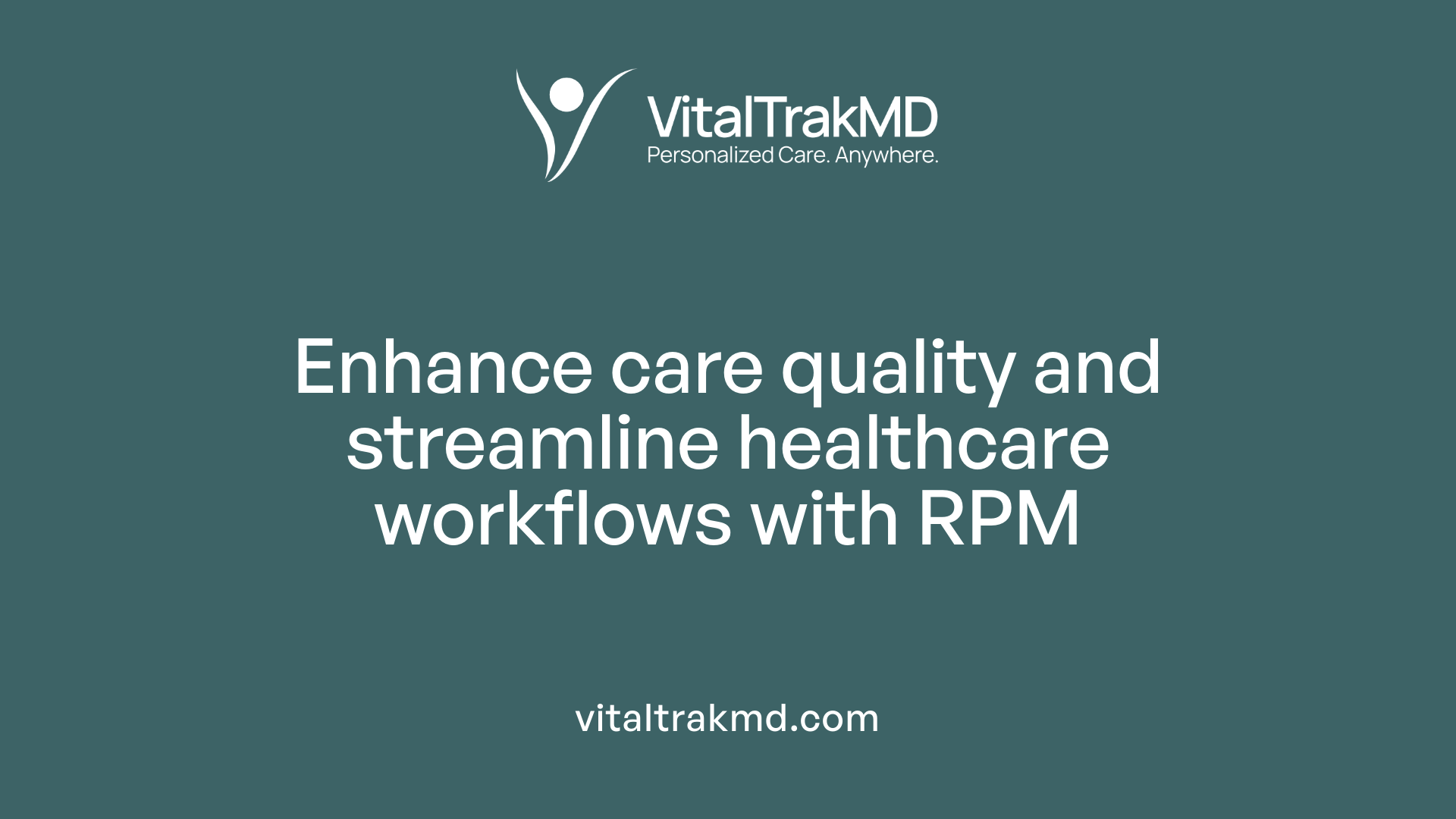
What are the advantages of remote wellness monitoring for older adults?
Remote wellness monitoring provides numerous benefits that greatly enhance the quality of care for older adults. By continuously tracking vital signs and health data in real-time, it allows for early detection of health issues, enabling prompt interventions that can prevent complications.
This technology helps seniors maintain independence and manage chronic conditions more effectively from the comfort of their homes. It reduces the dependence on frequent in-person visits, which can be costly and inconvenient, and supports aging in place.
Safety and confidence are also boosted through easy access to personal health information, visualization of health trends over time, and personalized care plans tailored to individual needs. Moreover, remote monitoring fosters better communication between patients and healthcare providers with automated alerts, data sharing, and regular updates.
Overall, integrating remote wellness monitoring into elderly care results in improved health outcomes, streamlines healthcare workflows, and promotes a proactive approach to managing health—making healthcare more accessible, efficient, and centered around the patient.
How does remote monitoring contribute to reduced hospital admissions and emergency visits?
Remote health monitoring has demonstrated its ability to identify health deterioration early, which supports proactive intervention and management. For older adults with chronic illnesses, this early detection translates into a significant decrease in emergency department visits and hospital admissions.
Data shows that remote monitoring can reduce emergency visits by up to 40%, as healthcare providers can act on symptoms or alarm signals before a condition worsens to require urgent care.
This approach not only improves safety for seniors but also alleviates burden on emergency services and reduces healthcare costs. By supporting timely, targeted care, remote patient monitoring helps keep elders safe and reduces the need for costly, disruptive hospital stays.
What about workflow efficiency and data integration?
Implementing remote patient monitoring streamlines healthcare workflows by providing continuous, organized data that is easily integrated into electronic medical records (EMRs). This ensures that clinicians have immediate access to up-to-date health information, facilitating more informed decision-making.
However, standardization remains a challenge, with many systems struggling with seamless data integration. Improving compatibility and interoperability between devices and EMRs is essential to avoiding workflow disruption.
Despite these challenges, many innovative RPM platforms actively work to simplify data collection and integration, helping healthcare providers save time, reduce manual documentation, and focus more on patient care.
How does RPM enhance patient and caregiver engagement?
RPM actively involves both patients and caregivers in the health management process. Patients gain easy access to their health data, which increases their understanding and perceived control over their health conditions.
This empowerment encourages better adherence to treatment plans and lifestyle modifications, ultimately leading to improved health outcomes.
Caregivers benefit as well; they can monitor vital signs and health trends remotely, providing support without constant in-person oversight. This ongoing involvement helps caregivers respond quickly to changes, fosters confidence, and reduces their stress.
Together, these elements create a more collaborative care environment, improving overall satisfaction and strengthening the clinician-patient relationship. Incorporating RPM into routine care thus results in a more engaged, proactive approach toward elderly health management.
Cost Savings and Healthcare Economic Benefits
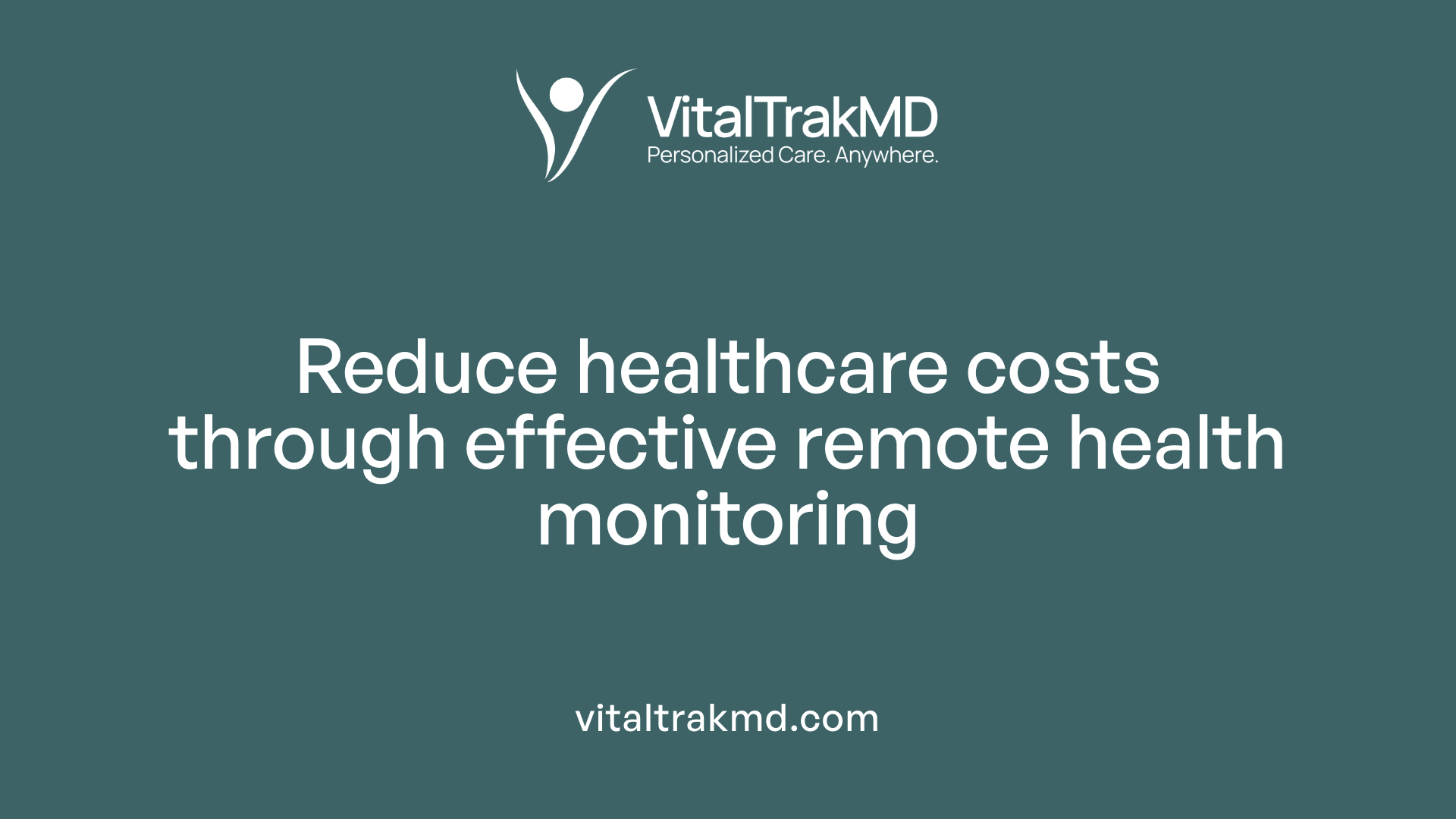 Remote patient monitoring (RPM) significantly contributes to reducing healthcare costs and improving economic efficiency in elderly care. One of the primary advantages of RPM is its ability to decrease the frequency of emergency room visits and hospital admissions. By enabling early detection of symptom changes and health deterioration, RPM allows healthcare providers to intervene proactively, often preventing costly emergency interventions.
Remote patient monitoring (RPM) significantly contributes to reducing healthcare costs and improving economic efficiency in elderly care. One of the primary advantages of RPM is its ability to decrease the frequency of emergency room visits and hospital admissions. By enabling early detection of symptom changes and health deterioration, RPM allows healthcare providers to intervene proactively, often preventing costly emergency interventions.
Studies have shown that RPM can lower hospital readmissions by up to 40%, which translates into substantial savings for healthcare systems. These reductions not only alleviate pressure on hospital resources but also cut down expenses associated with inpatient care.
In terms of overall financial impact, RPM has demonstrated the potential to save up to $8,000 annually per patient. These savings are achieved through minimized in-person visits, decreased use of emergency services, and more efficient management of chronic illnesses such as diabetes and hypertension.
From a patient perspective, RPM offers cost-effectiveness by reducing expenses related to travel, parking, and taking time off work for in-person appointments. For providers, integrating RPM into clinical workflows can boost revenue through enhanced care delivery, improved patient retention, and reimbursement opportunities.
Overall, RPM's capacity to enable safer, timely interventions while reducing unnecessary healthcare utilization makes it an economically attractive option for modern healthcare, especially in managing the high demands of elderly populations.
Supporting Healthcare Providers and Caregivers
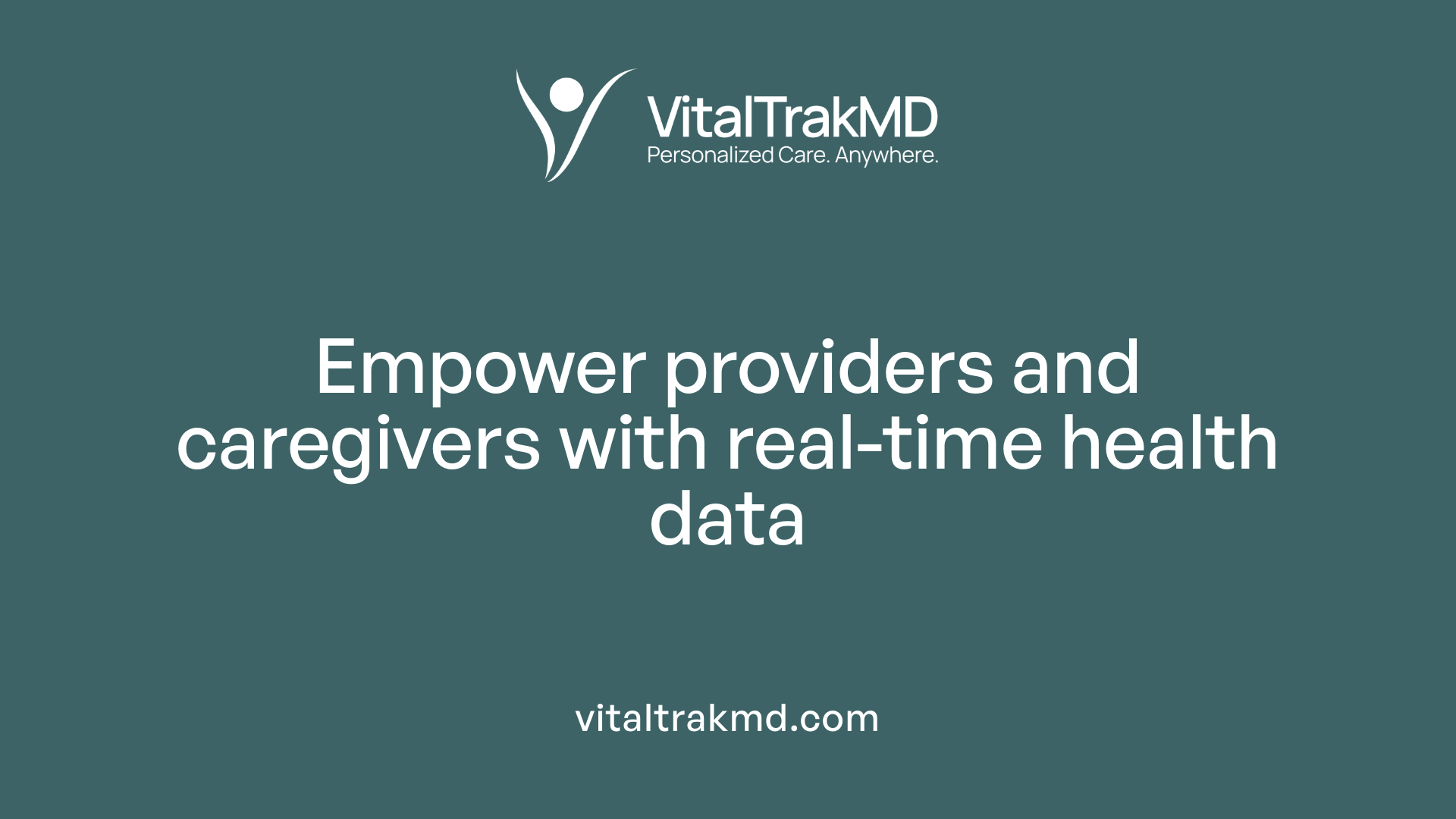
How does remote patient monitoring improve clinical insight and decision-making?
RPM offers healthcare providers continuous access to vital health data, enabling more accurate assessment of patient health trends. This ongoing stream of information allows for timely adjustments to treatment plans, early detection of potential complications, and personalized care delivery. Systematic reviews indicate that RPM can reduce hospital readmissions and outpatient visits, while also decreasing overall healthcare costs. Its effectiveness in managing chronic conditions like heart disease and diabetes has been demonstrated, often matching or exceeding traditional care methods.
How does RPM involve and support caregivers?
Remote monitoring technology fosters stronger caregiver involvement by providing access to real-time health data and alerts. Caregivers can monitor vital signs and symptoms remotely, participate in ongoing care planning, and respond swiftly to emergencies such as falls or sudden health deterioration. Many systems also include family portals and virtual communication options, which enhance family support and reduce caregiver workload. Devices designed for ease of use have high acceptability among older adults, facilitating caregiver support without adding complexity.
How does RPM contribute to workforce efficiency and its integration within telehealth?
RPM streamlines clinical workflows by automating data collection and alerts, allowing healthcare workers to focus on patients needing urgent attention. Integration with electronic medical records creates a seamless flow of information, reducing documentation burdens and errors. The use of telehealth platforms in tandem with RPM has significantly expanded access to care. During early 2020, the use of RPM increased by 154%, illustrating its role in managing care remotely, especially for seniors with mobility issues. This combination enhances care coordination, reduces unnecessary in-person visits, and optimizes resource utilization.
| Aspect | Benefits | Challenges |
|---|---|---|
| Clinical insights | Continuous data improves assessment | Data overload, inaccuracy |
| Caregiver role | Better involvement, real-time support | Need for user-friendly tech |
| Workflow efficiency | Streamlined processes, reduced hospital readmissions | Data integration issues, privacy concerns |
Evidence supports the safety and effectiveness of RPM for seniors, showing improvements in safety, adherence, and functional status, especially during transitions from inpatient to home care. Systematic reviews and technological assessments highlight its potential benefits, although further economic and implementation studies are needed to optimize deployment.
Transforming Elderly Care with Innovative Technology
As remote wellness monitoring continues to evolve, its potential to revolutionize elderly care becomes increasingly evident. By providing smarter, safer, and more personalized healthcare solutions, these technologies can enable older adults to lead healthier, more independent lives while easing the burden on caregivers and healthcare systems. Embracing innovation in remote health monitoring is essential for building resilient, accessible, and patient-centered care models that meet the needs of aging populations worldwide.
References
- Benefits and Challenges of Remote Patient Monitoring as Perceived ...
- Remote Health Monitoring for Older Adults and Those with Heart ...
- The Top 13 Benefits of Remote Patient Monitoring
- A systems approach towards remote health-monitoring in older adults
- Why Remote Patient Monitoring is Transforming Senior Care
- Top 10 Benefits of Using Elderly Monitoring Systems - SensorsCall
- The Extensive Approach to Remote Patient Monitoring for Elderly ...
- How Remote Patient Monitoring Can Help People Age in Place
- Benefits and Challenges of Remote Patient Monitoring as Perceived ...
Recent articles
Want to Feel Better and Live Healthier?
Join hundreds of patients taking control of their health with personalized care that fits their life – not the other way around.
Rated 4.8/5 by 32+ customers







